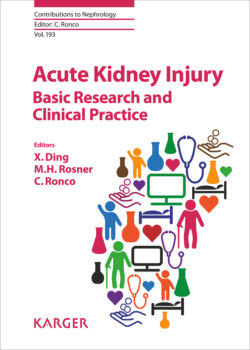Читать книгу Acute Kidney Injury - Basic Research and Clinical Practice - Группа авторов - Страница 36
На сайте Литреса книга снята с продажи.
Abstract
ОглавлениеThe definition of acute kidney injury (AKI) is now well established and encompasses changes in both the urine output and the serum creatinine (SCr) over time. Many studies to date have concentrated solely on the SCr criteria, as this is relatively easy to monitor, given that accurate urine output is rarely measured outside critical care areas. However, many studies have emphasised the inadequacies of SCr in highlighting potential renal injury in a timely fashion. These limitations reflect not only acute changes in creatinine metabolism in the critically ill but also the kinetics of creatinine generation that may hinder early recognition of AKI. In turn, this may prevent judicious intervention promoting the misconception that little can be done for patients with this devastating condition except treating the consequences. Such observations have led to much research focused on identifying early indicators of AKI that may enable early treatment and hopefully lead to improved outcomes. This explains in part the reasoning behind the interest in biomarkers of AKI and which may see them develop a role as part of established clinical tool(s) in both the assessment of severity of AKI and the potential to assess recovery. However, much of the effort behind biomarker research has focused on the ability of such candidate molecules to predict AKI as defined by the imperfect gold standards used currently. It may be that the presence of renal biomarkers associated with renal stress or injury in isolation dictates poor outcomes and as such may provide diagnostic certainty in their own right.
© 2018 S. Karger AG, Basel
